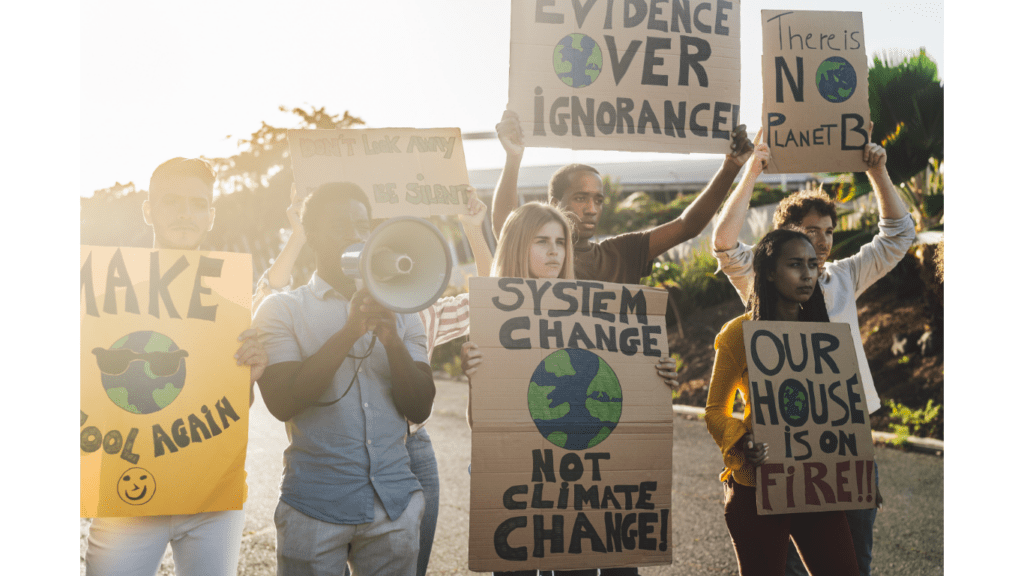Understanding Biodiversity and Its Importance
- The Definition of Biodiversity
Diving into the definition of biodiversity, it refers to the variety of life forms on Earth, encompassing different species of plants, animals, and microorganisms, as well as their unique characteristics. Biodiversity is not just about the number of species but also includes the genetic diversity within each species and the variety of ecosystems where these species thrive. It’s the intricate web of life that sustains ecosystems and provides essential services such as clean water, pollination, and climate regulation.
- Why Biodiversity Matters for Earth’s Ecosystems
Biodiversity plays a critical role in maintaining the balance of Earth’s ecosystems. Each species, no matter how small, contributes to the functioning of the ecosystem. For example, bees ensure pollination, which is vital for the production of fruits and seeds. Plants, in turn, produce oxygen through photosynthesis, which is essential for all living organisms. Additionally, diverse ecosystems are more resilient to disturbances like climate change or natural disasters. They can adapt and recover better when faced with challenges, ensuring the overall health of the planet’s ecosystems.
Threats to Biodiversity
- As I delve deeper into the challenges facing biodiversity conservation, it becomes evident that various threats endanger the delicate balance of ecosystems and the survival of species. Let’s explore some of the significant threats in detail.
1. Habitat Destruction and Fragmentation
Habitat destruction and fragmentation are key factors contributing to the decline of biodiversity. As human activities such as deforestation, urbanization, and agriculture expand, natural habitats shrink, leading to the loss of crucial areas for wildlife to thrive. Fragmentation further isolates populations, making it harder for species to find mates and resources, ultimately weakening their genetic diversity and resilience to environmental changes.
2. Climate Change Impacts on Species
Climate change poses a severe threat to biodiversity by altering ecosystems and habitats at an unprecedented rate. Rising temperatures, changing precipitation patterns, and extreme weather events disrupt the delicate balance that species rely on for survival. Shifts in climate can force species to migrate to new areas, compete for limited resources, or face increased risks of extinction due to mismatches in timing with food sources or breeding seasons.
3. Poaching and Wildlife Trade
Poaching and illegal wildlife trade remain significant threats to endangered species worldwide. The demand for exotic pets, traditional medicines, and wildlife products drives illegal activities that decimate populations of vulnerable species. Unregulated hunting and trade not only endanger individual animals but also disrupt entire ecosystems by removing key species essential for ecological functions like seed dispersal and predator-prey relationships.
4. Pollution and Its Effects on Habitats
Pollution, whether air, water, or land-based, has detrimental effects on habitats and the species that inhabit them. Contamination from chemicals, plastics, pesticides, and other pollutants can poison wildlife, alter reproductive success, and degrade ecosystems. Pollution not only directly harms species but also indirectly impacts their food sources, shelter, and the overall health of the environment, leading to cascading effects on biodiversity at large.
By addressing these threats effectively and implementing targeted conservation efforts, we can work towards safeguarding endangered species and preserving the rich tapestry of life that sustains our planet.
Strategies for Biodiversity Conservation
- Protected Areas and Reserve Management
Preserving protected areas and effectively managing reserves are crucial strategies in biodiversity conservation. These designated areas play a pivotal role in safeguarding habitats, providing refuge for endangered species, and promoting overall ecosystem health. By enforcing strict regulations and monitoring activities within these regions, we ensure the protection of vulnerable flora and fauna populations. Responsible management of reserves helps maintain biodiversity by allowing species to thrive in their natural environment without human disturbances.
- Wildlife Corridors and Biodiversity Hotspots
Creating wildlife corridors and identifying biodiversity hotspots are essential tactics in biodiversity conservation. Wildlife corridors connect fragmented habitats, enabling species to migrate, reproduce, and maintain genetic diversity. By establishing these pathways, we enhance ecosystem resilience and support the survival of endangered species. Biodiversity hotspots, on the other hand, are regions with high species diversity that require special conservation attention. Focusing efforts on these hotspots allows us to prioritize conservation actions effectively and protect critical ecosystems.
- Community-Based Conservation Efforts
Engaging local communities in conservation efforts is a key strategy for protecting endangered species and preserving biodiversity. By involving communities in decision-making processes, raising awareness about conservation issues, and providing alternative livelihoods, we foster a sense of stewardship towards nature. Empowering local residents to participate in conservation activities not only enhances the effectiveness of conservation programs but also contributes to sustainable development and reinforces the connection between communities and the environment.
- Ex-Situ Conservation Measures
Implementing ex-situ conservation measures is an important approach to complement in-situ efforts in biodiversity conservation. Ex-situ conservation involves the collection and protection of genetic material or individuals outside their natural habitat. Techniques such as captive breeding, seed banks, and botanical gardens help prevent the extinction of endangered species and provide a safety net for species facing critical threats in the wild. By maintaining viable populations ex-situ, we ensure the preservation of genetic diversity and the potential for future reintroduction efforts.
The Role of Technology in Conservation
In conservation efforts, technology plays a crucial role in maximizing effectiveness and efficiency. Utilizing advanced tools like drones and satellites allows for mapping and monitoring of habitats, providing valuable data for conservation strategies.
Mapping and Monitoring with Drones and Satellites
I leverage the latest technology in conservation by using drones and satellites for mapping and monitoring endangered species’ habitats. By remotely capturing high-resolution images and data, I can assess habitat conditions, track ecosystem changes, and identify potential threats to biodiversity. This technology enables me to monitor vast areas that are otherwise challenging to access, aiding in the conservation and protection of endangered species.
Genetic Research and Biodiversity Databases
In my conservation work, genetic research and biodiversity databases are vital tools for understanding and preserving endangered species. Through genetic studies, I can analyze the genetic diversity of populations, identify unique traits, and develop conservation strategies to ensure species survival. By utilizing biodiversity databases, I can access valuable information on species distribution, population trends, and conservation statuses, enhancing my efforts to protect and conserve biodiversity effectively.
International Laws and Agreements

Continuing from the technological advancements in conservation, international laws and agreements play a pivotal role in safeguarding endangered species and their habitats. These frameworks provide a legal basis for countries to collaborate and coordinate efforts to protect biodiversity on a global scale.
The Convention on Biological Diversity (CBD)
The Convention on Biological Diversity, or CBD, is a landmark international agreement that aims to promote sustainable development while ensuring the conservation of biodiversity. It sets out key principles for the sustainable use of natural resources, including the protection of endangered species and their habitats. The CBD encourages countries to develop national biodiversity strategies and action plans to effectively address threats to biodiversity.
CITES: Regulating Wildlife Trade
The Convention on International Trade in Endangered Species of Wild Fauna and Flora, known as CITES, is a crucial international treaty that regulates the international trade of endangered species. CITES aims to ensure that the trade of wildlife does not threaten their survival in the wild. By listing species in Appendices according to their conservation status, CITES controls their international trade and provides a framework for cooperation among countries to combat illegal wildlife trafficking.
The Role of NGOs and INGOs in Policy Implementation
Non-Governmental Organizations (NGOs) and International Non-Governmental Organizations (INGOs) play a significant role in implementing and monitoring policies related to biodiversity conservation. These organizations work closely with governments, local communities, and other stakeholders to advocate for stronger conservation measures, raise awareness about the importance of biodiversity, and provide support for conservation efforts on the ground. By engaging in fieldwork, research, and advocacy, NGOs and INGOs contribute to the effective implementation of international laws and agreements aimed at protecting endangered species and preserving biodiversity worldwide.
Success Stories in Biodiversity Conservation
Species Recovery Programs That Worked
- In my experience, I’ve observed notable success stories in species recovery programs that have effectively revived endangered populations. For instance, the California Condor Recovery Program stands out as a remarkable achievement in conserving a species on the brink of extinction. By implementing captive breeding, strict habitat protection, and extensive public awareness campaigns, the program managed to increase the California Condor population from a mere 27 birds in the 1980s to over 400 individuals today. This success demonstrates the positive impact of concerted conservation efforts in safeguarding endangered species.
- Another compelling example is the Giant Panda Conservation Program in China, which has made significant strides in protecting this iconic species. Through habitat restoration, anti-poaching measures, and community engagement, the program succeeded in raising the global panda population by 17% in the past decade. These initiatives highlight the effectiveness of targeted conservation strategies in preserving and revitalizing endangered species for future generations.
The Impact of Global Conservation Initiatives
In my view, global conservation initiatives play a pivotal role in safeguarding biodiversity and combating the threats facing endangered species worldwide. The implementation of agreements like the Convention on Biological Diversity (CBD) and the Convention on International Trade in Endangered Species of Wild Fauna and Flora (CITES) has led to tangible outcomes in protecting vulnerable wildlife and ecosystems.
Through these frameworks, countries collaborate on conservation efforts, share scientific knowledge, and enforce regulations to curb illegal wildlife trade. As a result, species like the African Elephant and the Snow Leopard have witnessed improved protection and conservation measures, leading to stabilized populations in certain regions. These collaborations underscore the importance of international cooperation and concerted action in addressing the global biodiversity crisis.
The success stories of species recovery programs and the impact of global conservation initiatives highlight the positive outcomes achievable through dedicated conservation efforts and coordinated international cooperation. These examples serve as beacons of hope for the future of endangered species and emphasize the critical role of collective action in preserving our planet’s rich biodiversity.


 Paulina Evansonic is a visionary journalist and media entrepreneur who founded Whisper Wagon Wire, a leading platform renowned for its exclusive insights into top stories, world news, science, technology, and home trends. With a passion for uncovering the truth and a keen eye for detail, Paulina has dedicated her career to providing readers with in-depth, accurate, and engaging content.
Paulina's journey in the media industry began with a strong academic background in journalism and communication. Her early career was marked by her work as a reporter and editor for various prestigious publications, where she honed her skills and developed a reputation for her investigative prowess and commitment to quality reporting.
Driven by a desire to create a more holistic and accessible news source, Paulina launched Whisper Wagon Wire. Under her leadership, the platform has grown to become a trusted name in journalism, known for its balanced reporting and insightful analysis. Paulina's innovative approach has not only elevated the standards of news media but also inspired a new generation of journalists to pursue excellence in their work.
Through Whisper Wagon Wire, Paulina continues to influence the media landscape, ensuring that readers stay informed about the most important developments around the world. Her dedication to truth and transparency remains at the core of her mission, making her a respected and influential figure in the field of journalism.
Paulina Evansonic is a visionary journalist and media entrepreneur who founded Whisper Wagon Wire, a leading platform renowned for its exclusive insights into top stories, world news, science, technology, and home trends. With a passion for uncovering the truth and a keen eye for detail, Paulina has dedicated her career to providing readers with in-depth, accurate, and engaging content.
Paulina's journey in the media industry began with a strong academic background in journalism and communication. Her early career was marked by her work as a reporter and editor for various prestigious publications, where she honed her skills and developed a reputation for her investigative prowess and commitment to quality reporting.
Driven by a desire to create a more holistic and accessible news source, Paulina launched Whisper Wagon Wire. Under her leadership, the platform has grown to become a trusted name in journalism, known for its balanced reporting and insightful analysis. Paulina's innovative approach has not only elevated the standards of news media but also inspired a new generation of journalists to pursue excellence in their work.
Through Whisper Wagon Wire, Paulina continues to influence the media landscape, ensuring that readers stay informed about the most important developments around the world. Her dedication to truth and transparency remains at the core of her mission, making her a respected and influential figure in the field of journalism.
